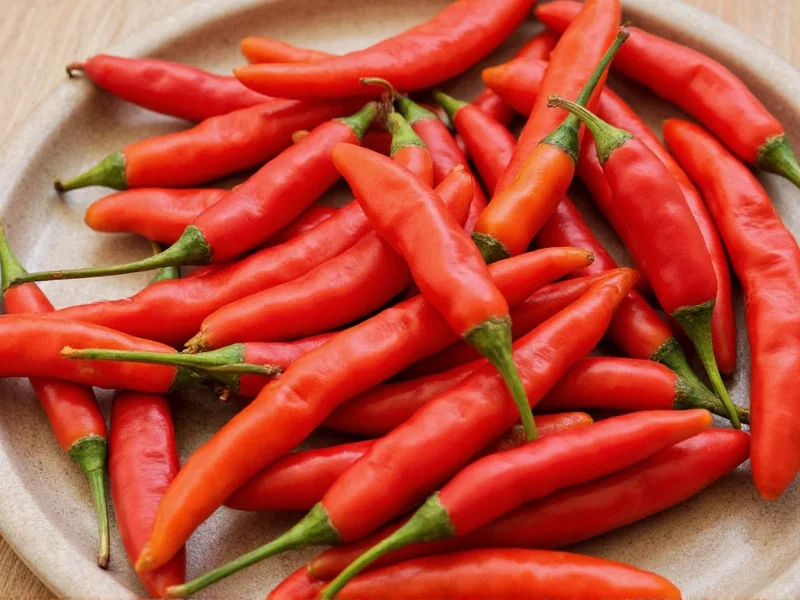The most effective ways to remove spiciness from chili include adding dairy products like milk or sour cream (capsaicin binds to casein), incorporating acidic ingredients such as lime juice or vinegar, mixing in starches like beans or potatoes, adding sugar to counteract heat perception, and diluting with additional non-spicy ingredients like tomatoes or broth. For immediate relief, start with 1/4 cup of dairy or 1-2 tablespoons of acid per quart of chili, adjusting gradually while tasting.
Understanding Why Chili Gets Too Spicy
Chili becomes overly spicy due to capsaicin, the compound in chili peppers that creates heat. When you add too many hot peppers or potent spices like cayenne, the capsaicin concentration overwhelms your taste buds. Unlike some flavors, capsaicin doesn't cook out—it binds to receptors on your tongue, creating that burning sensation. The good news? You can effectively reduce spiciness through scientific methods that neutralize or dilute capsaicin without ruining your dish.
Immediate Solutions to Reduce Spiciness in Chili
When your chili's heat level crosses from "perfectly spicy" to "unbearably hot," these proven techniques can rescue your meal. Each method works through different chemical principles to counteract capsaicin's effects.
Dairy-Based Neutralizers
Dairy products contain casein, a protein that breaks apart capsaicin molecules. This is why milk soothes your mouth after eating spicy food—it works the same magic in your pot.
- Whole milk or heavy cream: Add 1/4 cup at a time, simmering for 5 minutes between additions
- Sour cream or yogurt: Stir in 2-3 tablespoons per quart for tangy richness
- Cheese: Shredded cheddar or queso fresco adds creaminess while reducing heat
For how to make chili less spicy immediately, dairy provides the fastest relief. Avoid non-dairy alternatives like almond milk—they lack the necessary casein.
Acidic Balancers
Acids don't neutralize capsaicin but create a flavor balance that makes heat less noticeable. They work by altering your taste perception.
| Acidic Ingredient | Amount per Quart | Flavor Impact |
|---|---|---|
| Lime juice | 1-2 tbsp | Bright, fresh citrus notes |
| Vinegar | 1-2 tsp | Sharp tang (use apple cider for milder effect) |
| Tomato paste | 2-3 tbsp | Deepens richness while adding acidity |
For quick fix for too spicy chili, acidic ingredients work within minutes without altering texture. Add gradually while tasting—too much acid creates new balance issues.
Starch Absorbers
Starchy ingredients physically absorb capsaicin molecules, pulling heat out of the liquid base. They also add bulk to dilute overall spiciness.
- Beans: Add a drained can of pinto or kidney beans
- Potatoes: Dice and simmer until tender (remove before serving)
- Rice or quinoa: Stir in cooked grains for immediate dilution
This remove heat from chili recipe technique works best when you have time for simmering. Potatoes absorb capsaicin effectively but require 15-20 minutes of cooking time.
Dilution Method
When all else fails, simple dilution remains the most reliable how to make chili less spicy solution. Add non-spicy components to reduce capsaicin concentration:
- Additional tomato sauce or crushed tomatoes
- Beef or vegetable broth
- Pre-cooked ground meat
- Vegetable purees (like pumpkin or sweet potato)
Start with 1/2 cup additions per quart of chili, simmering for 10 minutes before assessing. This preserves your original flavor profile better than other methods.
What NOT to Do When Fixing Spicy Chili
Avoid these common mistakes when trying to neutralize spiciness in chili:
- Adding water: Dilutes flavor without reducing heat perception
- Using alcohol: Can intensify capsaicin's effects temporarily
- Adding more spices: Creates competing flavors rather than solving the problem
- Overusing sugar: Can make chili taste cloying if not balanced properly
Remember that time won't reduce spiciness—capsaicin remains stable during cooking. Your best approach combines immediate action with proper technique.
Preventing Overly Spicy Chili in the Future
Master these techniques to avoid chili too hot how to fix situations:
- Gradual addition: Add hot peppers in small increments, waiting 5 minutes between additions
- Seed removal: Discard pepper seeds and membranes where most capsaicin resides
- Taste testing: Use a spoon to sample while cooking, not your fingers
- Acid balance: Include tomatoes or citrus from the start to counter potential heat
Professional chefs recommend reserving some mild ingredients to add at the end if needed—this gives you a built-in safety net for perfect heat levels every time.
FAQ
Can you remove spiciness from already cooked chili?
Yes, you can reduce spiciness in cooked chili using dairy products, acidic ingredients, starches, or dilution methods. Dairy works fastest as casein breaks down capsaicin immediately. For best results, add ingredients gradually while simmering for 5-10 minutes between additions to allow flavors to integrate properly.
Does sugar really reduce spiciness in chili?
Sugar doesn't neutralize capsaicin but creates flavor balance that makes heat less noticeable. Start with 1 teaspoon per quart of chili, stirring until dissolved. Brown sugar works particularly well in chili as it complements the savory flavors while counteracting heat perception. Avoid adding too much, as excessive sugar can throw off your entire flavor profile.
How much dairy should I add to reduce chili heat?
Begin with 1/4 cup of whole milk, cream, or sour cream per quart of chili. Simmer for 5 minutes, then taste before adding more. For extremely spicy batches, you may need up to 1/2 cup per quart. Remember that dairy ingredients can curdle if added to boiling chili—temper them by mixing a small amount of hot liquid into the dairy first before stirring into the pot.
Will adding more tomatoes reduce spiciness in chili?
Yes, adding tomato products provides dual benefits: the acidity balances heat perception while dilution reduces overall capsaicin concentration. Use 1/2 cup of tomato sauce or a small can of crushed tomatoes per quart of chili. The natural sugars in tomatoes also help counteract spiciness. This method works particularly well for tomato-based chili recipes as it maintains the intended flavor profile while reducing heat.











 浙公网安备
33010002000092号
浙公网安备
33010002000092号 浙B2-20120091-4
浙B2-20120091-4